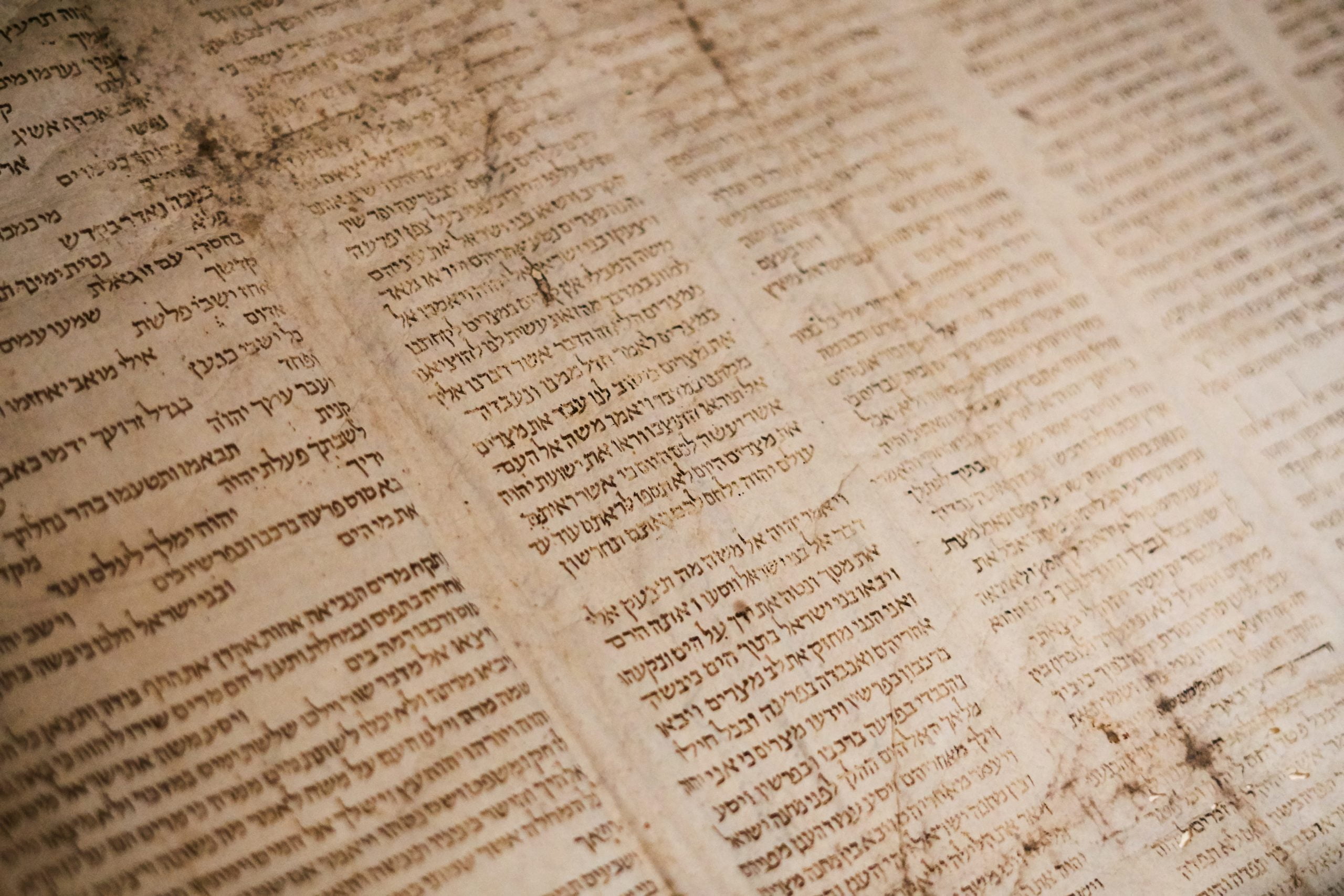
Sealing the Scroll
He replied, “Go your way, Daniel, because the words are rolled upand sealed until the time of the end. (Dan 12:9)
Sounding the Seventh Trumpet – NIV Abridged Version – Part 2
A high price will be exacted from those chosen to remain on earth in those days because, during the 1,260 days, there is one who is destined to break the power of God’s holy people.
Jesus Christ will, in that first three-and-a-half prophetic years, each comprised of 360 days, legally open the seven seals. I am convinced that many believers will be privileged to become part of a “cloud of witnesses” to the events leading up to the opening of the final seal when the kingdoms are reclaimed by our Lord Jesus Christ. However, a high price will be exacted from those chosen to remain on earth in those days,because during the 1,260 days, there is one who is destined to break the power of God’s holy people. Christian believers will share in the sufferings of their Lord as He moulds them in the furnace of affliction into the Church that is truly without spot or wrinkle.
In 2 Corinthians 4:6,7 we see how Paul used the clay pots in the story of Gideon (Judges 6) as a metaphor to describe himself and all believers:
For God, who said, “Let light shine out of darkness,” made his light shine in our hearts to give us the light of the knowledge of God’s glory displayed in the face of Christ.
But we have this treasure in jars of clay to show that this all-surpassing power is from God and not from us.
2 Cor 4:6,7
The light shining, as if through a broken vessel, is the power of the living Christ which shone through Paul’s weak human frame and shines through ours. The cross is the only route for the true child of God.
In these last days, I can say with confidence that the lights in the broken vessels of the true church of Jesus Christ are going to cause panic in a world hardened by sin. Every believer in Christ, standing under persecution, and perhaps facing death for what he knows is the truth, will act as a sign of judgment to those who are living in darkness.
Only the Lamb
While on the Isle of Patmos the revelations given to John by the angel of the Lord give God’s divine authority to the book of Revelation. It is a book with a promise attached to its reading:
Blessed is the one who reads aloud the words of this prophecy, and blessed are those who hear it and take to heart what is written in it, because the time is near. Rev 1:3

We have confirmation of the deity of Christ by His own testimony as it was Jesus Himself who walked among the lampstands representing the church (Rev 1:10-20).
“I am the Alpha and the Omega,” says the Lord God, “who is, and who was, and who is to come, the Almighty.” Rev 1:8
Also, in the first chapter of Revelation, Jesus affirms His church through the words of the angel:
…and from Jesus Christ, who is the faithful witness, the firstborn from the dead, and the ruler of the kings of the earth. To him who loves us and has freed us from our sins by his blood, and has made us to be a kingdom and priests to serve his God and Father—to him be glory and power for ever and ever! Amen.
“Look, he is coming with the clouds,”[a]
and “every eye will see him,
even those who pierced him”;
and all peoples on earth “will mourn because of him.”[b]
So shall it be! Amen. Rev 1:5-7
The three verses above hold the testimony of the Lamb of God. No-one else can claim the same credentials. Only He is found worthy to open the seals of the book. He is the omniscient, almighty God, who came to the world to save sinners (Rev 1:8). From Revelation 1:6 we know He is risen from the dead and He has made us kings and priests through the shedding of His blood. And we also know from Revelation 1:7 that He will return to lay claim to His people.
“Seventy ‘sevens’ are decreed for your people and your holy city to finish the transgression, to put an end to sin, to atone for wickedness, to bring in everlasting righteousness, to seal up vision and prophecy and to anoint the Most Holy Place. Daniel 9:24 (Emphasis added)
Both this passage, and Daniel 12:4, show us that Daniel was entrusted with these prophecies and told to seal them for a future time. Until quite recently, a king would sanction a document by adding the imprint of his seal, usually on a ring or a bracelet, to an official edict. As king, he always retained his personal seal but would, on occasion, entrust a secondary seal to an officer of state, who then used it to convey a plenary authority. The seal was a token of careful preservation and possession. Therefore, we can assume that the seal on Daniel’s prophecies indicated a very special determination of the authority on them by the Lord our King, Jesus Christ. Daniel was the one found trustworthy to bear that seal and to close the book. At the appointed time, when the seals were to be opened, John wept because no-one on earth or in heaven was found worthy of the task.

Then one of the elders said to me, “Do not weep! See, the Lion of the tribe of Judah, the Root of David, has triumphed. He is able to open the scroll and its seven seals.” Rev 5:5
So, while Daniel closes the seals on the prophecy, only the Son of God, the Lamb himself, is found worthy to open them. It is important to note that when the seal on the prophecies is mentioned in Daniel is in connection with the seventieth week, a time of great tribulation when the dead are raised to judgment.
“At that time Michael, the great prince who protects your people, will arise. There will be a time of distress such as has not happened from the beginning of nations until then. But at that time your people—everyone whose name is found written in the book—will be delivered.
2 Multitudes who sleep in the dust of the earth will awake: some to everlasting life, others to shame and everlasting contempt.
3 Those who are wise will shine like the brightness of the heavens, and those who lead many to righteousness, like the stars for ever and ever.
4 But you, Daniel, roll up and seal the words of the scroll until the time of the end. Many will go here and there to increase knowledge.”
Daniel 12:1-4
An understanding of the book of Daniel is vital to a correct interpretation of the events in Revelation. Here we have the confirmation that the seals opened at the outset of the final “week” are indeed the seals placed on Daniel’s prophecy. They are shut up and sealed until ‘the time of the end’; the last seven years before the return of Christ Jesus.
In Daniel 9:24 the phrase is used, ‘to seal up the vision and prophecy, and to anoint the most Holy’. Between the 69th week and the 70th is a gap encompassing the church age[1]. The period of the final week of years (shabua) will see the completion of these prophecies.
As Daniel began to write what is now chapter 8 of his book, he turned from the Aramaic language to the Hebrew and, in that sense, from the Gentile to a renewed focus upon the Jew.
There is no new revelation outside of God’s Word as some like to claim, but there is a continued unveiling of what is written and, as the time of the last seven years draws nearer, the prophetic word is becoming increasingly clearer to understand.
It is interesting that the Rabbis discourage the people from computing the prophecy of the seventy weeks, even to the point of claiming that there is a curse upon anyone that does so, obviously because it would lead them to the recognition that Messiah has already come.
[1] Seventy weeks Hebrew, ‘shavuim’ or sevens, can refer to sevens of anything depending on the context. In this case, it is seventy weeks of years or 490 years. The starting point is the decree to restore and rebuild Jerusalem. It is generally accepted that the third decree, issued by Artaxerxes to Nehemiah, is the starting date. The 490 years is divided into three. 7 weeks plus 69 weeks, at the end of which Messiah would be cut off (Dan 9:26) and the temple and Jerusalem would be destroyed. The final week of years speaks of the “prince who is to come” who will make a covenant allowing Jews to reinstate their sacrificial system. This prince comes from the same people who destroyed the temple – the Romans. Seventy weeks Hebrew, ‘shavuim’ or sevens, can refer to sevens of anything depending on context. In this case it is seventy weeks of years, or 490 years. The starting point is the decree to restore and rebuild Jerusalem. It is generally accepted that the third decree, issued by Artaxerxes to Nehemiah, is the starting date. The 490 years is divided into three. 7 weeks plus 69 weeks, at the end of which Messiah would be cut off (Dan 9:26) and the temple and Jerusalem would be destroyed. The final week of years speaks of the “prince who is to come” who will make a covenant allowing Jews to reinstate their sacrificial system. This prince comes from the same people who destroyed the temple – the Romans.
Seventy weeks Hebrew, ‘shavuim’ or sevens, can refer to sevens of anything depending on context. In this case it is seventy weeks of years, or 490 years. The starting point is the decree to restore and rebuild Jerusalem. It is generally accepted that the third decree, issued by Artaxerxes to Nehemiah, is the starting date. The 490 years are divided into three. 7 weeks plus 69 weeks, at the end of which Messiah would be cut off (Dan 9:26) and the temple and Jerusalem would be destroyed. The final week of years speaks of the “prince who is to come” who will make a covenant allowing Jews to reinstate their sacrificial system. This prince comes from the same people who destroyed the temple – the Romans.
Leave a Reply